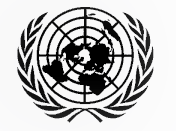Background
In 1952, the General Assembly, by its resolution 502 (VI) of January 1952, created the United Nations Disarmament Commission (UNDC) under the Security Council with a mandate to prepare proposals for a treaty for the regulation, limitation and balanced reduction of all armed forces and all armaments, including the elimination of all weapons of mass destruction. However, it met only occasionally after 1959.
From 1960 onward, disarmament negotiations were carried out by a succession of bodies, starting with the Ten-Nation Disarmament Committee. This body became the Eighteen-Nation Disarmament Committee in 1962, the Conference of the Committee on Disarmament in 1969 and ultimately the Conference on Disarmament from 1978.
In 1978, the first special session of the General Assembly devoted to disarmament established a successor Disarmament Commission as a subsidiary organ of the Assembly, composed of all Member States of the United Nations. It was created as a deliberative body, with the function of considering and making recommendations on various issues in the field of disarmament and of following up on the relevant decisions and recommendations of the special session. It reports annually to the General Assembly.
In light of its function, the UNDC focuses on a limited number of agenda items at each session. In 1989, to allow for in-depth consideration, it decided that its substantive agenda should be limited to a maximum of four items. From 1993, it has, in practice, dealt with two or three items, each of which has usually been considered for three consecutive years. In 1998, by its decision 52/492, the General Assembly decided that the UNDC’s agenda, as of 2000, would normally comprise two substantive items per year from the whole range of disarmament issues, including one on nuclear disarmament.
The UNDC, which meets for three weeks in the spring, operates in plenary meetings and working groups, the number of working groups depending on the number of substantive items on its agenda. The five geographical groups take turns assuming the chairmanship of the UNDC and its working groups.
Over the years, the UNDC has formulated consensus principles, guidelines and recommendations (see below) on a number of subjects, which have been endorsed by the General Assembly. After 1999 and until 2017, it was unable to agree on any substantial outcome. In 2017, it succeeded in adopting consensus recommendations on “Practical confidence-building measures in the field of conventional weapons”. In 2023, it adopted consensus “Recommendations to promote the practical implementation of transparency and confidence-building measures in outer space activities with the goal of preventing an arms race in outer space, in accordance with the recommendations set out in the report of the Group of Governmental Experts on Transparency and Confidence-Building Measures in Outer Space Activities”.
The UNDC is serviced substantively by the Office for Disarmament Affairs and technically by the Department of General Assembly Affairs and Conference Services.
Sessions
Find documentation from current and past UNDC sessions on the UNODA Meetings Place website.

